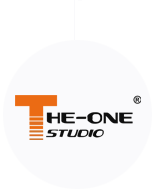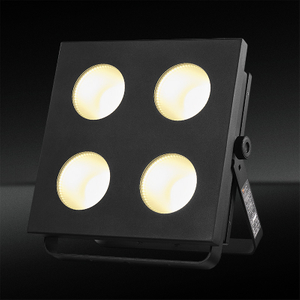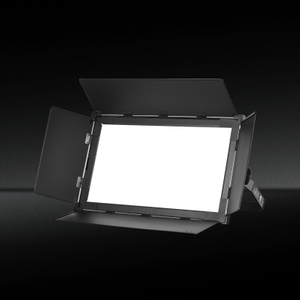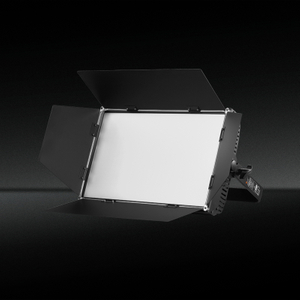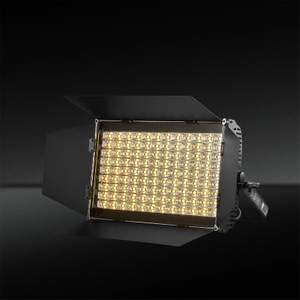What is the difference between spotlight and Fresnel light?
Views: 1 Author: Site Editor Publish Time: 2025-09-10 Origin: Site








Lighting plays a crucial role in photography, videography, stage production, and many other fields where visual presentation is essential. Among the various types of lights used in these industries, spotlights and Fresnel lights are two of the most commonly used lighting instruments. While both are used to direct light in a controlled manner, they have distinct characteristics and are employed differently depending on the desired effect.
This article will delve into the differences between spotlight and Fresnel light, with a particular focus on LED Fresnel Lights, which are rapidly gaining popularity due to their energy efficiency and advanced features. The article will explore their definitions, applications, characteristics, and advantages, providing a comprehensive comparison to help you make an informed decision about which lighting option best suits your needs.
What is a Spotlight?
A spotlight is a lighting instrument that produces a narrow, focused beam of light, often used to highlight a specific area or subject. The beam is highly controlled and can be directed with great precision. Spotlights are typically used in theater productions, concerts, and other live performances to draw attention to a particular actor, object, or area of the stage. The intensity of the light can often be adjusted, and the beam can be shaped using different accessories, such as gobos or barn doors.
Characteristics of a Spotlight:
Narrow Beam: A spotlight typically produces a beam of light that is focused and intense, making it ideal for highlighting specific subjects or areas.
High Intensity: Spotlights usually have a higher intensity compared to other lighting instruments, allowing them to create dramatic effects and emphasize particular details.
Adjustable: The beam size and intensity of a spotlight can be adjusted, allowing for versatile use in various applications.
Versatile Accessories: Spotlights can be fitted with accessories like gobos, which create patterns, or barn doors, which control the direction of the light.
Applications of Spotlights:
Theater Productions: Spotlights are commonly used in live theater to focus attention on performers during key moments of a performance.
Concerts: In concerts, spotlights are often used to highlight solo performers or specific sections of the stage.
Film and Photography: Spotlights can be used in film and photography to create dramatic lighting effects or to illuminate particular areas of a set.
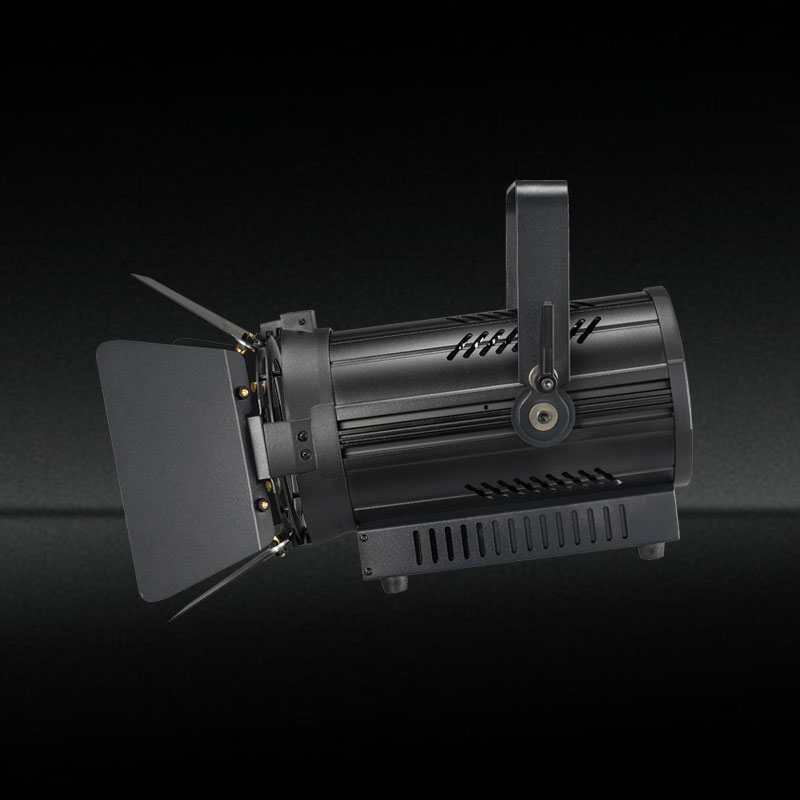
What is a Fresnel Light?
A Fresnel light is a type of lighting instrument that uses a Fresnel lens to create a soft, diffused light. This lens is made of concentric circles of prisms, which allow the light to be focused or spread depending on the position of the light source. Fresnel lights are commonly used in film and television production, as well as in theater and stage lighting.
The defining characteristic of a Fresnel light is its ability to produce a soft, even light with a controllable beam spread. The light can be adjusted from a wide, floodlight-style beam to a narrow spotlight-style beam, depending on the needs of the scene or performance. Unlike traditional spotlights, which produce a harsh, defined edge to their beam, Fresnel lights create a softer, more gradual transition between light and shadow.
Characteristics of a Fresnel Light:
Soft and Diffused Light: The Fresnel lens in a Fresnel light creates a soft, diffused light that is less harsh than a spotlight.
Variable Beam Angle: The beam spread can be adjusted, ranging from a wide flood to a narrow spotlight, making it versatile for different lighting setups.
Even Light Distribution: Fresnel lights produce an even, uniform light with minimal shadows, making them ideal for illuminating large areas or providing fill light.
Control Over Light Intensity: The intensity of the light can be controlled, but it is generally softer and less focused compared to a spotlight.
Applications of Fresnel Lights:
Film and Television: Fresnel lights are used extensively in film and television production to create soft, flattering lighting for actors or to provide ambient lighting for scenes.
Theater: In stage lighting, Fresnel lights are used for general lighting and to create soft, uniform illumination across the stage.
Photography: Fresnel lights are often used in portrait photography to provide even, flattering light on the subject.
What is an LED Fresnel Light?
An LED Fresnel light is a modern variation of the traditional Fresnel light that uses LED technology instead of traditional incandescent or tungsten bulbs. The main advantage of LED Fresnel lights is their energy efficiency, long lifespan, and ability to produce the same high-quality lighting as traditional Fresnel lights while consuming less power.
LED Fresnel lights combine the advantages of LED technology with the soft, diffused lighting characteristics of Fresnel lights. They are available in various sizes and configurations, making them suitable for different lighting needs, from small studio setups to large-stage productions.
Advantages of LED Fresnel Lights:
Energy Efficiency: LED technology uses significantly less power than traditional lighting sources, making LED Fresnel lights more energy-efficient and cost-effective.
Longer Lifespan: LEDs have a much longer lifespan compared to incandescent or tungsten bulbs, reducing the need for frequent replacements.
Reduced Heat Output: LED lights generate much less heat, making them more comfortable to use in confined spaces or close to performers.
Dimmable and Adjustable: Like traditional Fresnel lights, LED Fresnel lights allow for adjustable beam angles and intensity, offering a wide range of lighting effects.
Versatility: LED Fresnel lights are used in a variety of applications, including film, television, theater, and photography.
Key Differences Between Spotlight and Fresnel Light
While both spotlights and Fresnel lights are used to direct light in a controlled manner, there are several key differences between them.
1. Beam Focus and Control
Spotlights produce a narrow, focused beam that can be adjusted for intensity and direction. They are typically used to highlight a specific subject or area with high intensity.
Fresnel lights offer a soft, diffused light with a variable beam angle. The beam can be adjusted from a wide floodlight-style beam to a narrow spotlight-style beam, but the transition between light and shadow is much softer than in a spotlight.
2. Light Quality
Spotlights produce harsh, defined edges to their beam, creating sharp contrasts between light and shadow.
Fresnel lights create a soft, even light with a more gradual transition between light and shadow. This makes them ideal for creating flattering, natural-looking lighting.
3. Applications
Spotlights are best for situations where high-intensity lighting is needed to highlight a specific area or subject, such as in theater, concerts, or photography.
Fresnel lights are more suited for creating soft, ambient lighting or fill light in film, television, and stage productions.
4. Energy Efficiency
LED Fresnel lights offer superior energy efficiency compared to traditional incandescent spotlights or Fresnel lights. They consume less power, produce less heat, and have a longer lifespan.
FAQs
1. Which is better, a spotlight or a Fresnel light?
The choice between a spotlight and a Fresnel light depends on the specific requirements of your lighting setup. If you need focused, high-intensity light to highlight a particular area or subject, a spotlight is ideal. If you need a softer, more diffused light with adjustable beam angles, a Fresnel light is a better option.
2. Can an LED Fresnel light replace a traditional Fresnel light?
Yes, an LED Fresnel light can effectively replace a traditional Fresnel light. LED technology offers many advantages, including energy efficiency, longer lifespan, and reduced heat output, while still providing the same high-quality lighting characteristics.
3. How do I adjust the beam angle of a Fresnel light?
The beam angle of a Fresnel light can be adjusted by moving the light source closer or farther from the Fresnel lens, or by adjusting the lens itself if the fixture allows for such adjustments.
4. Can spotlights be used for film lighting?
Yes, spotlights can be used in film lighting to create high-intensity, dramatic lighting effects. However, Fresnel lights are more commonly used in film lighting because of their softer, more flattering light.
5. What is the main advantage of using an LED Fresnel light over a traditional Fresnel light?
The main advantage of using an LED Fresnel light is its energy efficiency. LED lights consume less power, generate less heat, and have a longer lifespan compared to traditional incandescent or tungsten lights, making them a more cost-effective and environmentally friendly option.
In conclusion, both spotlights and Fresnel lights serve important roles in lighting design, each offering unique benefits depending on the desired effect. LED Fresnel lights have further revolutionized lighting by combining the advantages of LED technology with the soft, diffused light characteristic of traditional Fresnel lights. When selecting the right lighting instrument, consider your specific needs, whether it's for theatrical performance, film production, or photography, to choose the best option for your setup.
